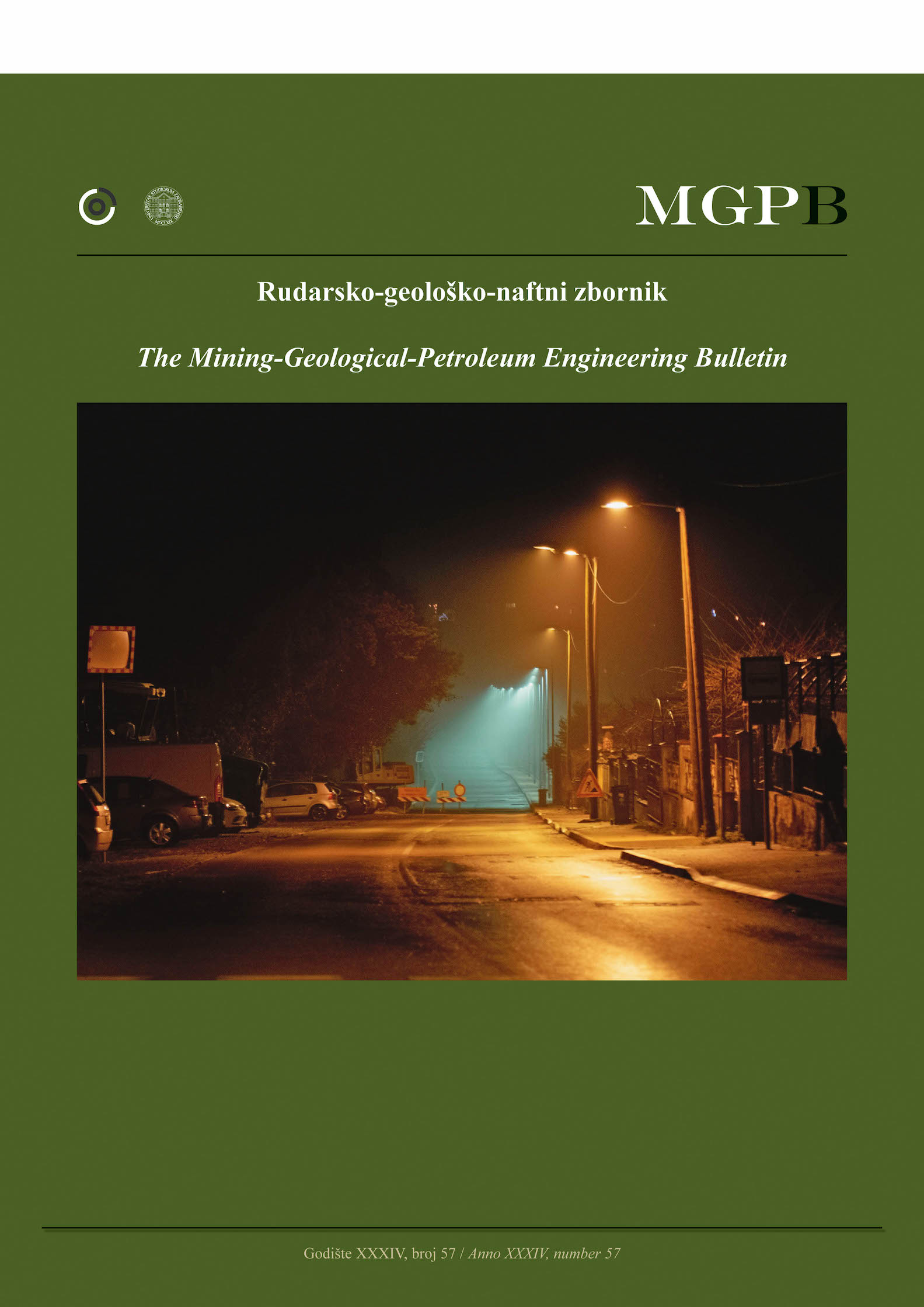Prediction of the Height of Fracturing via Gene Expression Programming in Australian Longwall Panels: A Comparative Study
DOI:
https://doi.org/10.17794/rgn.2022.1.9Keywords:
Longwall mining, Height of fracturing, Gene Expression Programming, Empirical modelAbstract
The caving and subsidence developments above a longwall panel usually result in fractures of the overburden, which decrease the strength of the rock mass and function as opposed to it. The height of fracturing (HoF) includes the caved and continuous fractured zones affected by a high degree of bending. Among the various empirical models, the Ditton's geometry and geology models are widely used in the Australian coalfields. The application of genetic programming (GP) and gene expression programming (GEP) in longwall mining is entirely new and original. This work uses a GEP method in order to predict HoF. The model variables, including the panel width (W), cover depth (H), mining height (T), unit thickness (t), and its distance from the extracted seam (y), are selected via the dimensional analysis and the Buckingham's P-theorem. The dataset involving 31 longwall panels is used to present a new nonlinear regression function. The statistical estimators, including the coefficient of determination (R**2), the average error (AE), the mean absolute percentage error (MAPE), and the root mean square error (RMSE), are used to compare the performance of the discussed models. The value for the GEP model (99%) is considerably higher than the corresponding values of the Ditton's geometry (= 61%) and geology (= 81%) models. Moreover, the maximum values of the statistical error estimators (AE, MAPE, and RMSE) for the GEP model are 12 %, 14%, and 16%, respectively, of the corresponding values of the Ditton's models.
Downloads
Published
How to Cite
Issue
Section
License
Copyright (c) 2021 authors and journal

This work is licensed under a Creative Commons Attribution 4.0 International License.
Creative Commons-BY
Authors who publish with this journal agree to the following terms:
In agreeing this form, you certify that:
- You read the ethical codex of the RGN zbornik available at journal web.
- You submitted work is your original work, and has not previously been published and does not include any form of plagiarism.
- You own copyright in the submitted work, and are therefore permitted to assign the licence to publish to RGN zbornik.
- Your submitted work contains no violation of any existing copyright or other third party right or any material of an obscene, libellous or otherwise unlawful nature.
- You have obtained permission for and acknowledged the source of any illustrations, diagrams or other material included in the work of which you are not the copyright owner.
- You have taken due care to ensure the accuracy of the work, and that, to the best of your knowledge, there are no false statements made within it.
- All co-authors of this submitted work are aware of, and in agreement with, the terms of this licence and that the submitted manuscript has been approved by these authors.
Publication licence
You retain copyright in your submitted work, according to journal license policy (CC-BY). By signing this form you agree that RGN zbornik may publish it under the publication licence. In summary the licence allows the following:
Anyone is free:
- To copy, distribute, display, and perform the work.
- To make derivative works.
Under the following conditions:
- The original author must always be given credit.
- The work may not be used for commercial purposes.
- If the work is altered, transformed, or built upon, the resulting work may only be distributed under a licence identical to this one.
Exceptions to the licence
In addition to publishing the work printed under the above licence, RGN zbornik will also enable the work to be visible online.
The journal editorial can change the licence rules anytime but it cannot retroactively restrict author(s) rights.


